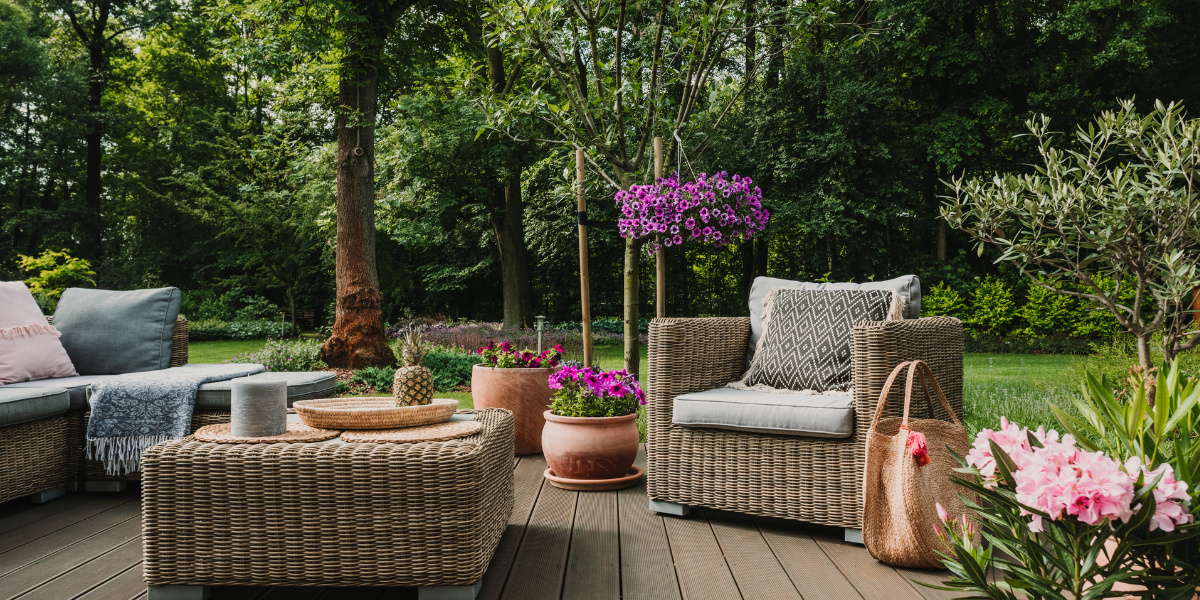
A Complete Guide to Maximizing Small Spaces: Home & Garden Solutions for Compact Living in 2025
Home and Garden 🏡 2025-06-17 6 minutes to readAs cities grow denser and more people move to urban areas, the trend of compact living continues to accelerate. With the world's population pressing beyond 8 billion, maximizing small spaces has become increasingly essential in 2025. The need for well-organized and efficient living spaces is more critical than ever. In this guide, we delve into innovative home and garden solutions that will help you transform your limited living spaces into functional and aesthetically pleasing environments.
Choosing the Right Solutions for Small Spaces
When it comes to compact living, selecting the appropriate solutions is crucial to optimize your space. Consider your lifestyle and the specific needs of your household before embarking on any redesign or remodeling. Sustainability and efficiency are key elements in today's space-saving designs.
Multipurpose Furniture
One of the most effective ways to maximize small spaces is by incorporating multipurpose furniture. Pieces that serve dual functions, like a bed that doubles as a workspace or a sofa with built-in storage, are invaluable. Consider designs that integrate seamlessly into your existing décor for added efficiency.
Vertical Gardening
For garden enthusiasts living in urban apartments, vertical gardening offers a perfect solution. Vertical gardens or green walls not only save floor space but also improve air quality and add a verdant touch to interiors. Opt for self-watering systems to minimize maintenance efforts.
Innovative Storage Solutions
Look into creative storage solutions such as floating shelves, under-bed storage, and wall-mounted furniture. These options help keep clutter at bay and make the most of every inch of your home. Using vertical space effectively reduces the feeling of being cramped.
Maintenance and Ownership Costs
When embracing compact living solutions, it's essential to consider maintenance and ownership costs. Initial investments can vary based on the design and materials chosen, and additional costs might be incurred over time.
Cost of Multipurpose Furniture
While multipurpose furniture may have a higher upfront cost, their long-term benefits often justify the investment. Quality materials withstand the test of time, and versatile functionality can reduce the need to purchase additional pieces.
Vertical Garden Care
Caring for a vertical garden involves regular monitoring of water systems and lighting conditions. Investing in self-sustaining setups might have initial costs but can reduce long-term maintenance efforts, providing a perfect green solution for compact spaces.
Storage Solutions
Innovative storage solutions can be budget-friendly, often requiring minimal maintenance. However, ensure that such furniture is suited to changing needs, providing flexibility and adaptability.
Technological Innovations Enhancing Small Spaces
2025 has witnessed a surge in technological advancements that specifically cater to compact living. Smart home gadgets and IoT (Internet of Things) devices integrate seamlessly into small spaces, offering increased comfort and efficiency.
Smart Home Devices
Devices like smart thermostats, voice-activated speakers, and automated lighting systems can revolutionize small space living. These tools not only save energy but also enhance convenience, allowing you to control multiple aspects of your home environment through a smartphone or via voice commands.
Adaptable Living Solutions
Integrated smart systems help make compact living comfortable. Flat panels, foldable room dividers, and retractable furnishings can be easily managed with the press of a button, offering a dynamic and responsive living space.
Environmental Impact and Sustainability
With environmental awareness growing, compact living also aligns with broader efforts to reduce carbon footprints. Efficient use of resources, reduction in waste, and sustainable practices are highlights of small space solutions.
Energy Efficiency
Optimizing energy use with LED lighting, energy-efficient appliances, and intelligent resource management leads to significant savings and promotes environmental sustainability.
Recycling and Upcycling
Embrace recycling and upcycling strategies to enhance eco-friendly living. Repurposing old materials into new furnishings not only saves space but also contributes to lessening environmental impact.
Case Studies and Examples
Practical examples provide valuable insights into how compact living solutions can be implemented effectively. Here are some successful real-world applications:
Urban Apartments
A New York-based case study reveals how a 400-square-foot apartment was transformed with multifunctional furniture, achieving a balanced living and working area. Unique nooks were created using foldaway desks and wall beds, demonstrating efficient use of space.
Eco-Friendly Homes
A family in Portland, Oregon, converted their loft into a sustainable urban oasis, featuring solar panels and a rooftop garden. Their commitment to eco-friendly living led to reduced utility costs and a harmonious blend of technology with the natural environment.
In conclusion, maximizing small spaces in 2025 involves a blend of innovative furniture solutions, sustainable practices, and technological sophistication. By choosing multipurpose furniture, integrating vertical gardens, and embracing smart home technology, you can transform limited areas into functional and comfortable living spaces. Keeping costs and environmental impact in mind leads not only to efficient living but also to an eco-friendly lifestyle.
